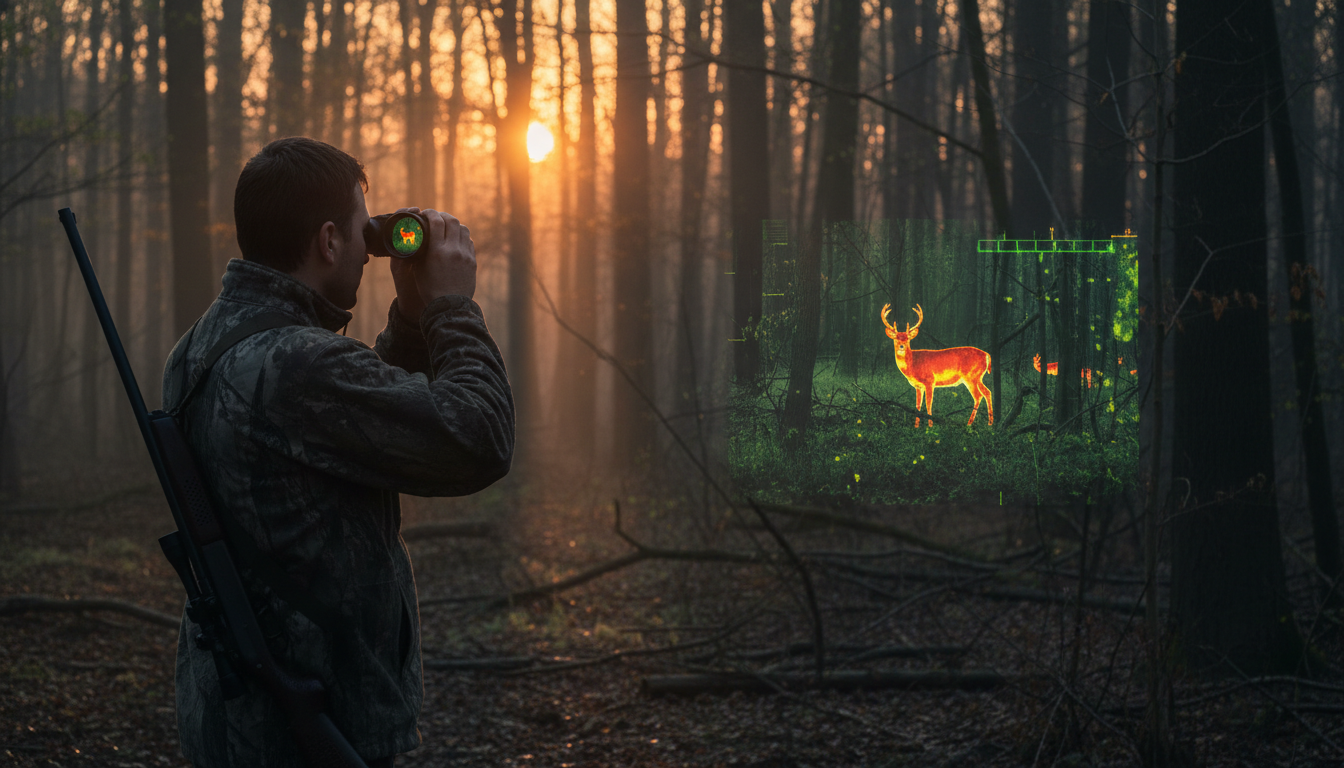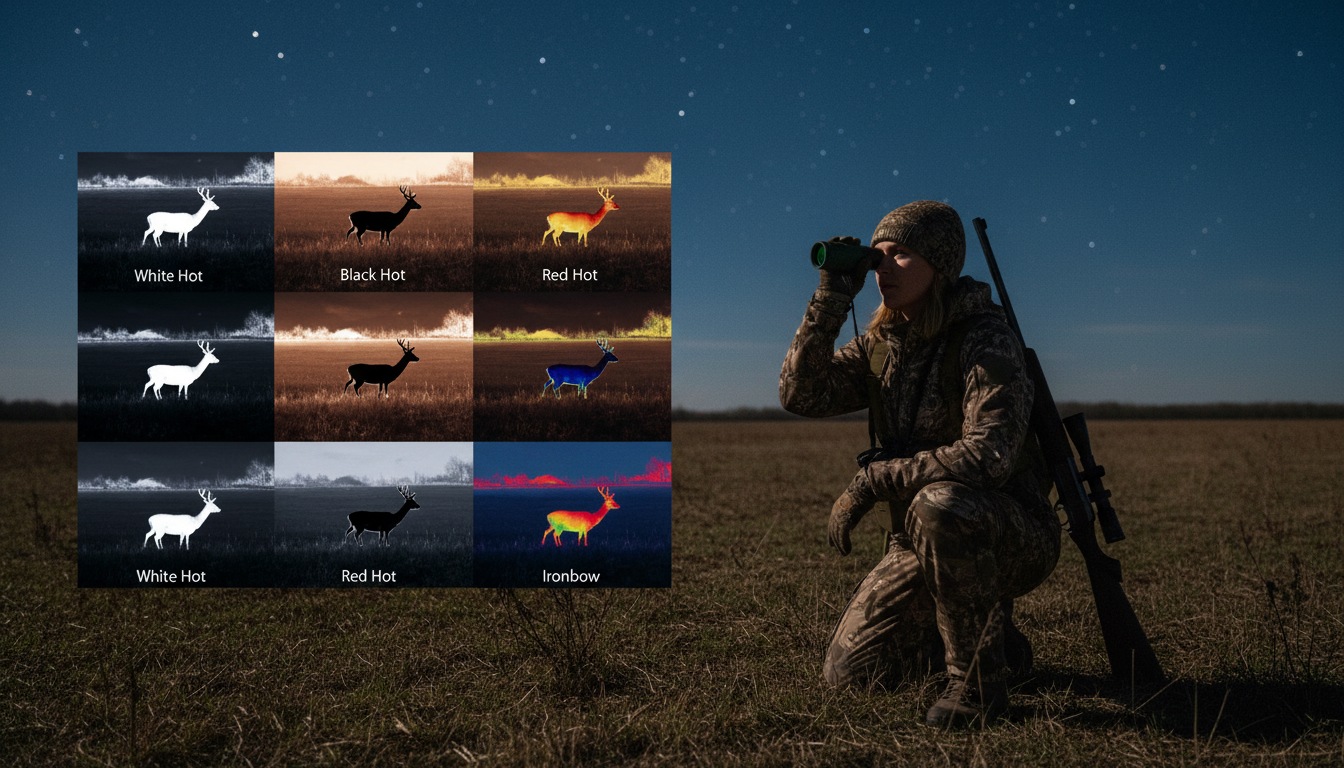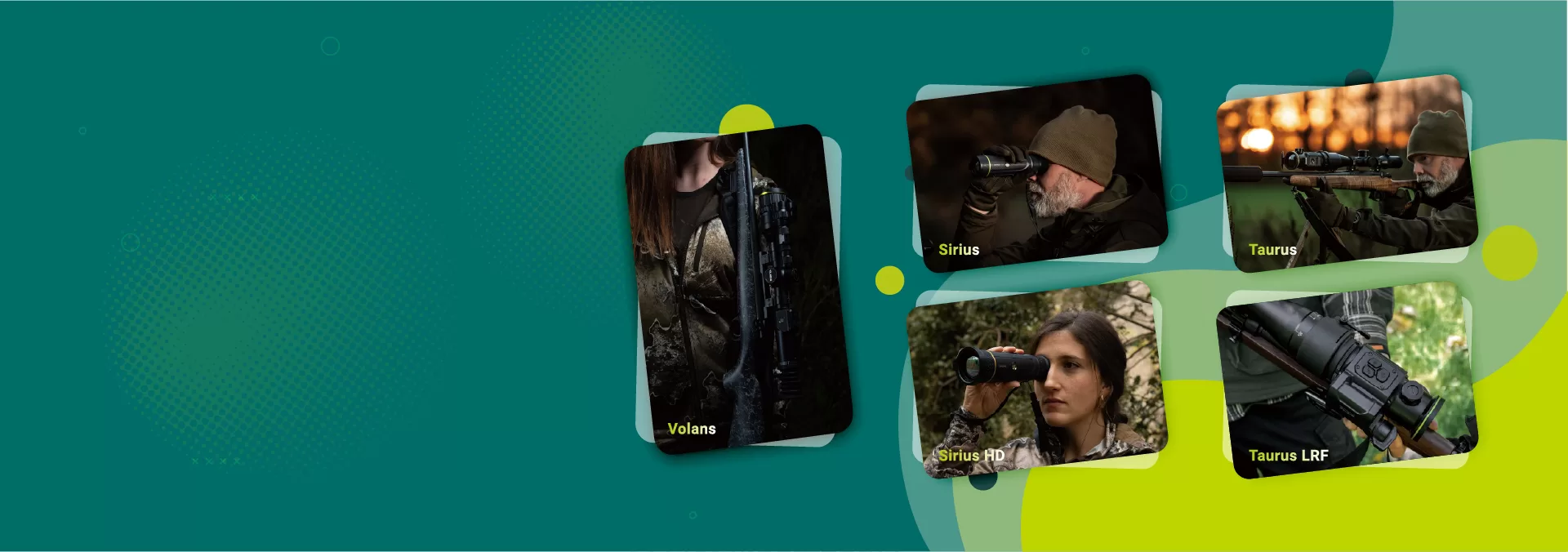
When you’re out hunting before dawn or tracking game after sunset, seeing what you can’t see becomes your biggest challenge. That’s where thermal monoculars come in—they’ve completely changed the game for professional hunters who need every advantage in the field. We’re talking about handheld devices that detect heat signatures in complete darkness, through fog, and even light brush, giving you capabilities that were only available to military operators just a few years back.
At Pixfra, we understand that professional hunting demands reliable, high-performance gear. Whether you’re tracking predators on your property, managing wildlife populations, or heading out on serious hunts where success matters, thermal technology has moved from luxury to essential tool. Let’s walk through everything you need to know about using thermal monoculars for professional hunting—from picking the right specs to mastering field techniques that actually work.
What Makes Thermal Monoculars Game-Changers for Hunters

Thermal monoculars work by detecting infrared radiation—basically heat—instead of relying on visible light like your regular optics or even night vision. Inside these devices, a microbolometer sensor converts heat energy into an electrical signal that gets displayed as a visual image on your screen. Warmer objects like animals show up bright against cooler backgrounds, making them incredibly easy to spot even when they’re completely hidden from your naked eye.
The beauty of thermal imaging is its total independence from light conditions. Unlike traditional night vision that needs at least some moonlight or starlight to amplify, thermal monoculars work equally well in pitch darkness, heavy fog, rain, or even through smoke. If there’s a temperature difference between your target and its surroundings, you’re going to see it. For hunters, this means you can operate effectively during those prime early morning and late evening hours when game is most active but visibility is terrible. Plus, thermal is a passive system—it doesn’t emit any infrared beam that might spook your quarry, keeping you completely stealthy in the field.
How to Choose a Thermal Monocular for Hunting

Picking the right thermal monocular isn’t about grabbing the priciest model off the shelf. It’s about matching the device specs to your actual hunting style and environment. Here’s what professional hunters should focus on when shopping around.
Sensor resolution directly impacts how much detail you can see in the thermal image. You’ll encounter resolutions like 160×120, 256×192, 320×240, 384×288, and 640×480 pixels. Think of it like your phone camera—more pixels mean sharper, more detailed images. For most hunting situations, a 320×240 or 384×288 resolution hits the sweet spot between performance and price. You’ll clearly identify whether that heat signature is a deer, coyote, or just a stump that’s been warming up all day. If you’re hunting larger properties where you need to spot animals beyond 500 yards, stepping up to 640×480 makes sense. But if you’re working thick woods where shots happen inside 200 yards, don’t overspend on resolution you won’t actually use.
Detection range tells you how far out you can pick up a heat signature. Most quality monoculars can detect human-sized targets from 500 to over 1,500 yards, depending on sensor and lens specs. But here’s the thing—detection and identification are totally different. You might detect something at 800 yards, but you won’t know if it’s your target species until you get closer. For professional hunting applications, being able to positively identify game at 200-400 yards is usually plenty. The Pixfra Sirius HD series offers excellent detection-to-identification ratios designed specifically for hunting scenarios.
Refresh rate measured in hertz (Hz) determines how smooth your image looks when scanning or tracking moving targets. A 50 Hz refresh rate is pretty much standard now and provides fluid, real-time imagery that doesn’t lag when you’re panning across a field or following an animal on the move. Lower refresh rates like 9 Hz will feel choppy and can make it hard to track fast-moving game—definitely avoid those for hunting.
Battery life matters more than you might think. There’s nothing worse than having your thermal die right when that big boar finally shows up. Look for models offering at least 6-8 hours of runtime on a single charge. Some units use replaceable batteries like CR123As or rechargeable 18650s, while others have built-in lithium packs. Removable batteries give you flexibility to carry spares, but built-in packs are usually more weather-sealed. Consider your typical hunt length and whether you’ll have access to power for recharging.
Thermal Monocular vs Thermal Scope: Which Do You Need?

This is one of the most common questions we get from hunters entering the thermal world. The short answer is: they serve different purposes, and serious hunters often end up with both.
Thermal monoculars are handheld scanning devices. You use them to locate and identify game before you ever pick up your rifle. They’re incredibly versatile—you can glass an entire field in minutes, spot animals bedded in cover, navigate safely to your stand in the dark, and recover wounded game after the shot. The biggest advantage of a monocular is that you can scan without constantly shouldering your rifle or swinging a weapon-mounted scope left and right, which gets exhausting fast. With a thermal monocular, you spot your target, set it down, grab your rifle, and take your shot—all without unnecessary movement that might alert your quarry.
Thermal scopes, on the other hand, mount directly to your rifle and are purpose-built for shooting. They include reticles, zeroing features, and often ballistic profiles for different loads. Once you’re ready to take the shot, a thermal scope lets you aim and fire in the same system. The downside is they’re optimized for shooting, not general scanning or navigation. Sweeping terrain with a rifle-mounted scope is awkward, tiring, and potentially unsafe.
For most professional hunters, a thermal monocular is the better place to start. You get maximum versatility, better ergonomics for scanning, and you can use it for multiple purposes beyond just hunting—property surveillance, wildlife observation, tracking wounded animals, even search and rescue if needed. Add a thermal scope later if you’re doing extensive night shooting. Many pros run both: monocular for spotting, scope for shooting.
Real-World Hunting Applications for Thermal Monoculars
Professional hunters use thermal monoculars for way more than just spotting game. These devices have become multi-purpose tools that improve safety, success rates, and ethical hunting practices across the board.
Predator and hog control is probably the most popular application. Coyotes, feral hogs, and other nuisance animals are primarily nocturnal and incredibly wary. Thermal monoculars let you detect them from safe distances even in total darkness, plan your approach, and identify targets with certainty before taking a shot. You can quickly scan field edges, brushy draws, and fence lines where heat signatures stand out clearly against cooler backgrounds.
Early morning and late evening hunts become dramatically more effective with thermal. You can navigate to your stand well before dawn without stumbling around with a flashlight that spooks every deer within a mile. Once in position, you can scan surrounding areas to see where animals are bedding, feeding, or moving—all before legal shooting light. Similarly, those last 30 minutes of the evening when light fades fast? Thermal keeps you hunting effectively right up until you’re legally done.
Tracking wounded game is where thermal monoculars really prove their worth ethically. A blood trail that disappears in thick grass or brush is often visible as a heat signature if the animal is still down. Even if the animal has moved, the residual heat from its bedding area or the trail it took can sometimes be detected. This capability helps ensure clean recoveries and reduces lost game—something every ethical hunter prioritizes.
Terrain navigation and safety shouldn’t be overlooked. Thermal monoculars reveal hazards like drop-offs, water features, other hunters, or livestock that might be invisible in darkness or fog. This enhanced situational awareness prevents accidents and helps you move confidently through unfamiliar country after dark.
Field Techniques for Professional Thermal Hunting
Owning a thermal monocular is one thing. Using it effectively in real hunting situations requires some technique and practice. Here are proven strategies professional hunters rely on.
Methodical scanning patterns help you cover ground efficiently without missing targets. Instead of randomly sweeping your monocular around, develop a systematic approach. Start close and work outward in overlapping sections. For open fields, scan the edges first where animals typically enter, then work toward the middle. In wooded terrain, focus on openings, clearings, and natural funnels where game concentrates. Move slowly—quick panning can cause you to miss stationary animals, and the motion might blur your image even with a good refresh rate.
Understanding heat signatures takes some experience. Fresh deer beds often show up as warm spots for 15-30 minutes after the animal leaves. Recently used trails through tall grass can appear slightly warmer. Even campfires, vehicles, or sun-warmed rocks create heat signatures that might confuse new users. Learn to distinguish between your target species and false positives by observing how different objects cool down over time and how animal movement differs from stationary heat sources.
Color palette selection can make a huge difference in different conditions. Most thermal monoculars offer multiple viewing modes like White Hot (warm objects appear white), Black Hot (warm objects appear black), and various color options like Red Hot or Iron. White Hot typically provides the best contrast in most hunting scenarios and is great for spotting. Black Hot can reduce eye strain during extended glassing sessions. Red Hot and other color palettes sometimes help pick out subtle temperature differences in complex scenes. Experiment with different palettes in your hunting environment to find what works best for your eyes and conditions.
Wind and approach strategy still matter with thermal. Just because you can see an animal doesn’t mean you can approach carelessly. Always stay downwind, minimize noise, and plan your stalk based on terrain and cover. Thermal gives you the advantage of knowing exactly where your quarry is before you move, so use that intel to plan the perfect approach rather than rushing in and spooking everything.
Combining thermal with traditional optics is how the pros operate. Use your thermal monocular to detect and locate game, then switch to quality binoculars or your rifle scope for detailed observation and positive identification during legal shooting hours. Some hunters even run thermal alongside night vision in complex environments—thermal for detection, night vision for natural image detail when making final shot decisions.
Maintaining Your Thermal Monocular for Peak Performance
Thermal optics are built tough, but they’re also precision instruments that need proper care to perform reliably season after season.
Lens cleaning should be done with proper materials—use a soft microfiber cloth and optics-safe cleaner. Avoid household glass cleaners that can damage specialized coatings on your lens. If you get mud or debris on the lens, rinse it gently with water first before wiping to avoid scratching. Always replace your lens cap when the unit isn’t in use to protect the sensor from damage.
Post-hunt care is simple but important. If you’ve been hunting in rain, snow, or high humidity, allow your monocular to air dry completely before sealing it in a case. This prevents moisture from getting trapped inside where it can cause condensation buildup on internal components. Store your device in a dry, padded case with silica gel packs to absorb any residual moisture.
Battery management extends the life of your power source. Recharge batteries after every outing rather than waiting until they’re completely dead. Lithium-ion cells last longer when you avoid full depletion. In cold weather, keep spare batteries in an inside pocket close to your body—battery performance drops significantly in sub-zero temperatures, and keeping them warm preserves charge.
Firmware updates are often available from manufacturers and can improve performance, add features, or fix bugs. Check your manufacturer’s website periodically and update your device when new firmware becomes available. This is especially true for newer models that may receive ongoing improvements.
Budget Considerations: What to Expect at Different Price Points
You don’t need to spend five figures to get a solid thermal monocular, but understanding what you get at different price brackets helps you make a smart investment.
Budget range ($500-$1,500) gets you entry-level monoculars with 160×120 or 256×192 resolution. These work fine for close-range detection under 300 yards and are great starter units to see if thermal hunting is right for you. Battery life might be shorter, features more basic, but they’ll still spot game you’d never see with naked eyes alone. Brands like AGM and some ATN models hit this price point.
Mid-range ($1,500-$3,500) is where most serious hunters land. You’re looking at 320×240 or 384×288 resolution, decent detection ranges (500-1,000+ yards), and useful features like multiple color palettes, video recording, and 6-10 hours of battery life. This sweet spot delivers professional-grade performance without breaking the bank. The Pixfra thermal monocular lineup offers excellent value in this category with proven reliability in the field.
Premium range ($3,500+) brings you top-tier 640×480 resolution, laser rangefinders, advanced ballistic computers, extended detection ranges beyond 1,500 yards, and ruggedized construction that can handle serious abuse. If you’re a professional guide, wildlife manager, or hunt extensively in challenging conditions, this investment pays off in capability and reliability.
For most hunters starting out, we recommend starting in the mid-range and upgrading later if you find you need more capability. A good mid-range thermal monocular will serve you well for years and handle the vast majority of hunting situations you’ll encounter.
Frequently Asked Questions
Can you use thermal monoculars for hunting legally?
It depends on your state and what you’re hunting. Most states allow thermal optics for predator and hog hunting on private land with few restrictions. Some states prohibit thermal for big game like deer and elk. A few states restrict night hunting entirely regardless of optics. Always check your local game laws before heading out. Thermal is legal in most places, but regulations vary significantly.
How far can you see with a thermal monocular?
Detection range varies by sensor resolution and lens quality. Budget models detect human-sized targets to about 300-500 yards. Mid-range units reach 500-1,000 yards. Premium monoculars can detect large animals beyond 1,500 yards. But remember—detection and identification are different. You’ll typically identify game at roughly half your detection distance. For most hunting, 300-500 yard identification range is plenty.
Do thermal monoculars work in daylight?
Yes, thermal monoculars work any time of day because they detect heat, not light. They’re actually great for spotting bedded animals in thick cover during daylight—the animal’s body heat stands out even when you can’t see it with regular binoculars. However, always follow manufacturer instructions about lens caps and aperture settings to protect your sensor from potential sun damage.
What’s better for hunting: thermal or night vision?
For pure hunting effectiveness, thermal wins hands down. It works in total darkness, through fog and light brush, doesn’t require any ambient light, and makes animals stand out clearly. Night vision provides a more natural image but needs some light to work and can struggle in thick cover or bad weather. Many serious hunters use thermal for detection and tracking, sometimes paired with night vision for final identification if local laws require.
How long do thermal monoculars last?
With proper care, quality thermal monoculars typically last 5-8 years or longer. The microbolometer sensors are rated for thousands of hours of operation. Battery packs usually need replacement after 2-3 years of heavy use. The biggest longevity factors are protecting your device from hard impacts, keeping it dry, and storing it properly during off-season. Buy from reputable brands that stand behind their products with solid warranties.




